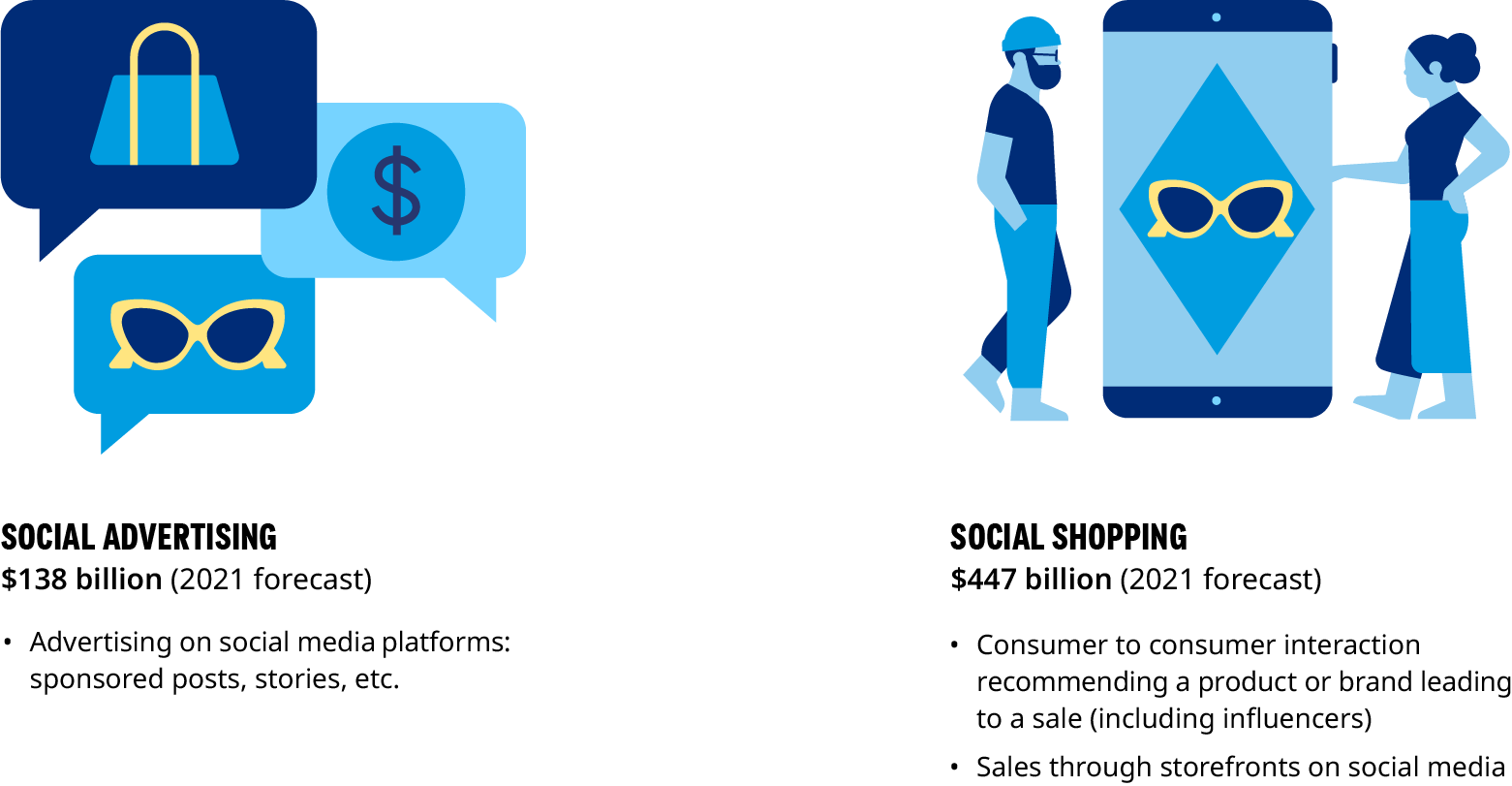E-commerce, while convenient, has up till now lacked the social experience that people get from a trip to the store with friends. After many attempts to change this in the past, e-commerce appears to be at an inflection point, and there has been a surge of activity over the past year. Major social media platforms have launched new shopping features that let users browse virtual stores and make purchases without leaving the platform. And startups are setting up digital malls and sites where influencers and other people can share recommendations. The total value of shopping either triggered by or carried out on social media platforms is forecast to rise to $1.6 trillion in 2025, according to Statista, from about $600 billion in 2021.
That means it’s time for retailers and brands to figure out how social commerce fits into their e-commerce strategies. Categories such as fashion, which are often bought on impulse, are a natural fit, because they are often visually inspired. On the other hand, categories such as electronics have a longer and more complex journey from intention to purchase, but social advertising could boost their sales through better-targeted, more-effective campaigns. Though the specifics are still rapidly evolving, it is all-but certain that social commerce will represent a large part of future e-commerce transaction value. Any retailer or brand that does not now start thinking social commerce risks being left behind.
What is social commerce?
Social commerce can be roughly defined as all interaction on social platforms that potentially leads to a transaction between parties, and it divides into two main parts: social advertising and social shopping. Social advertising consists of advertising on social platforms. This is growing as a proportion of total digital advertising for brands and retailers and is forecast to be worth around $138 billion globally in 2021, according to Statista. In social shopping, on the other hand, businesses sell products directly on social media platforms or following social media interaction between consumers. Social shopping is forecast to reach $447 billion in 2021.

Social commerce really started off in Asia, which is now about a decade ahead of the rest of the world and represents 68% of global value, according to Grand View Research. Within Asia, China has led the trend, but Southeast Asia is also now experiencing a surge, and social commerce there is now estimated to be 44% of overall e-commerce value.
That lead is largely thanks to the broad-based platforms of digital giants, especially in China, who had an incentive to keep users within their own ecosystems. They have made it easy for sellers to either link from social media sites to their own stores, or else sell directly within a social media platform for a seamless consumer journey and checkout. Adjacent models are emerging too. Livestreaming is becoming an important sales channel, while one platform lets users share what they have browsed or bought with their social network and invites them to form small teams to make group purchases at lower prices.
In Europe and North America, leading social media platforms launched stores during the Covid pandemic to help physical stores do business during lockdowns. They are also continuing efforts to attract a larger share of the spending on digital marketing through innovative advertising formats such as live feeds, stories, and carousels. They combine these with tools that show the returns on campaigns. The advertising tools and storefronts together serve to keep consumers on their platforms all the way from first interest to purchase – a strategy similar to that of the Chinese platforms.
New, niche players are functioning as online malls with social media features, and they often reward users for sharing their favorite items – either directly, through payments, or by helping them measure and compare their influence, which constitutes a kind of social reward. Other models use social media analytics to measure the influence of individual users.
A major challenge – shared with Chinese players – is to scale beyond products bought on impulse to higher-value, technical categories, such as electronics, appliances, travel, and home-repair and improvement products. Here, purchase journeys are more complex and include extensive research and price comparisons, and the new platforms have not yet achieved a presence. Social media should be able to play a role, however, as they can relay the shopping decisions of people with similar tastes and interests. They could also let people seek advice, perhaps asking their network, “What’s the best TV for €1,000?”
What should brands and retailers do?
Brands and retailers can benefit more from social media advertising if they focus on its special features, such as its ability to micro-target campaigns and the role of influencers. They can get the most impact from influencers by using them selectively to promote launches of new products and collections, and expert influencers can help target offers to specific customer segments. Social shopping sales can be boosted by selectively building out stores on the new platforms and designing price and product strategies for different channels, such as exclusives for a particular social commerce store. The social stores will function best when they are integrated with companies’ own customer databases and loyalty programs.
As social commerce matures, it creates opportunities for retailers and brands to get closer to consumers and better understand their purchase journeys for different categories. Sellers will thus be able to respond with targeted propositions at each step. They will also see how various products perform along the journey and, consequently, what matters to customers. Platforms can also help to identify potentially valuable influencers and experts.
Combining the connectivity, stickiness, and engagement of social media with the massive growth in e-commerce, social commerce is sure to be a big part of the future of e-commerce. Any brand or retailer that wants to be part of that future needs to take it seriously, now.

